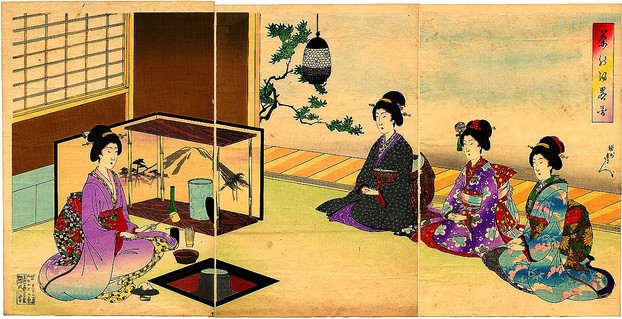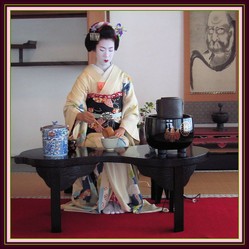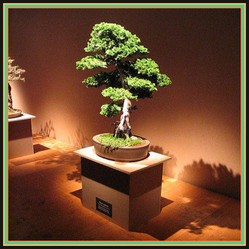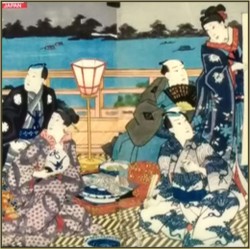It is interesting to note that even before the Warlords and Elites of Japan embraced tea, it was an active, regular part of Zen rituals when monks drank tea to rejuvenate themselves for long hours of meditation. Tea is also served in the morning and evening in Vipassana Shivirs even today, wherein we are instructed to be alert and awake all the time even during our breakfast and meals.
A Japanese monk who travelled to China for studies and exploring the culture brought back with him the seeds of tea ceremony along with the seeds of tea plant in 11th century according to the sources available. The tea ceremony although a new concept was openly accepted by the elites, Royalties in Japan and many forms were adopted and explored to perfect zen, tea of art. It was a welcome gesture from a Geisha or a Maiko to the Lords in shivering wintery evenings.
© copyright WriterArtist 2021, All rights reserved
Image via Wikimedia under CC Attribution-Share Alike 2.0 Generic license
Author : renfield kuroda




















 Harvest Bounty of Fall Fruitson 08/03/2023
Harvest Bounty of Fall Fruitson 08/03/2023
 Is Buddhism older than Hinduism?on 06/13/2023
Is Buddhism older than Hinduism?on 06/13/2023
 Was Tirumala Tirupati Balaji Temple a Buddhist Shrine?on 06/13/2023
Was Tirumala Tirupati Balaji Temple a Buddhist Shrine?on 06/13/2023
 The Great Wave of Kanagawa from Japanese Artist Hokusaion 06/11/2023
The Great Wave of Kanagawa from Japanese Artist Hokusaion 06/11/2023



On your visit to Japan, do you want to attend a Japanese Tea Ceremony?
The website Chanoyu World links Chado to spiritual advancement through considerate, disciplined, mindful ways. It links Chanoyu to aesthetic, intellectual and social advancement through beautiful setting and utensils more overtly than to spiritual advancement.
It mentions Chado as practicable with one person even as Chanoyu always needs one host and at least one guest.
That guest notices the power, social status and wealth of the Chanoyu host because Chanoyu orients its host to ever more expensive, ever rarer utensils.
The World History Encyclopedia online article Japanese Tea Ceremony says that Chado and Chanoyu always serve green tea.
Which ceremony -- Chanoyu World online suggests Chado as "attractive to so many" -- and which green tea variety would most visitors tend toward (or would there be no choice)?
Dear DerdriuMarriner - In India, during my 10 days course of Vipassana, Indian Chai was served in the morning and evening devoid of any pomp and show. It was simple and served by Dhammasevaks and Dhammasevikas (people who give service). The idea is to renounce the world for 10 days and get a taste of a monk's life. We are taught to relinquish our egos, maintain noble silence and meditate. We are eternally grateful to people who provide us food and shelter.
Hi DerdriuMarriner - You are right. One ought to visit Japan during the Cherry Blossom Festivals. You can combine many such events with Japanese Tea ceremony. It is a wonderful sight. I have watched on TV.
WriterArtist, Thank you for all the practical information, pretty pictures and product lines.
From first learning about them, I've thought that a combination of cherry blossom festival activities and tea ceremonies would be a culturally enriching, educationally entertaining way to begin such a visit.
You mention Vipassana Shivirs. Would it be the same kind of tea no matter the timing and what kind (or kinds) would be served?